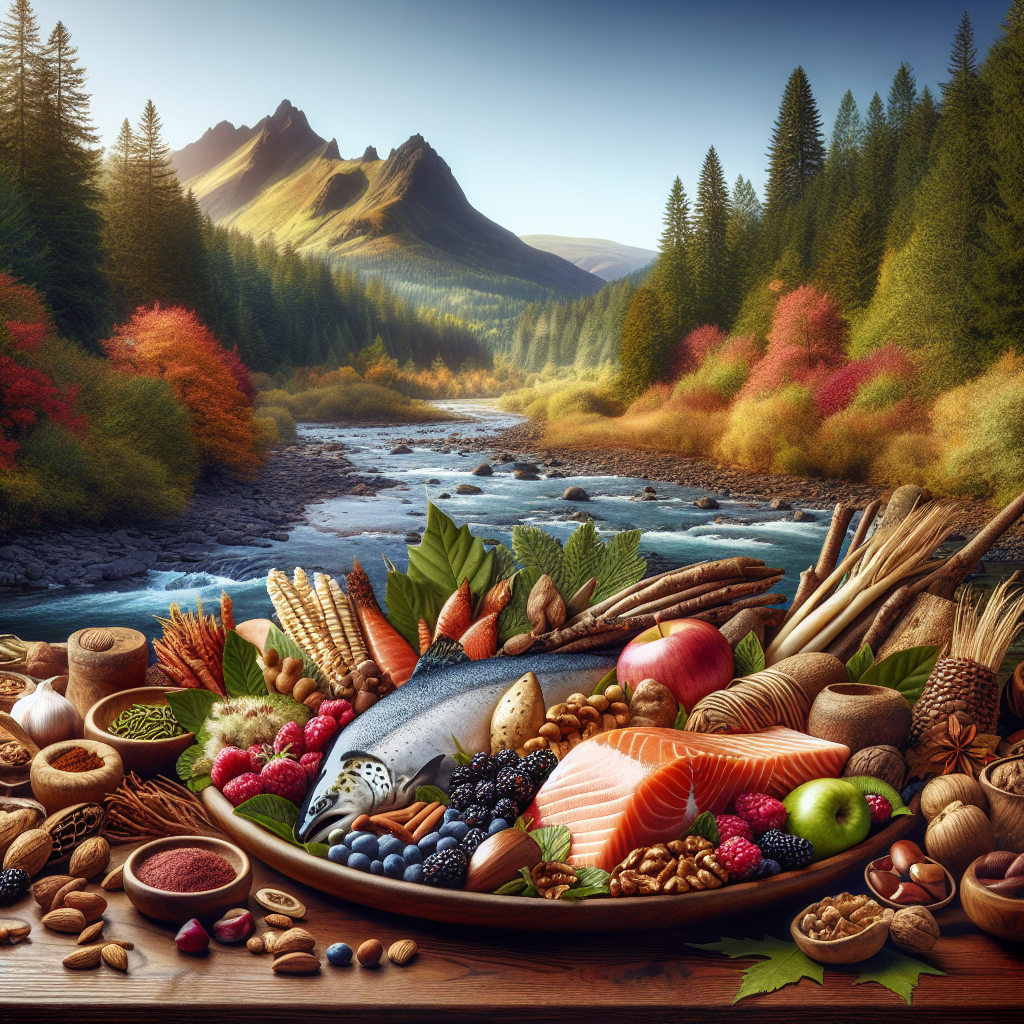Traditional Indigenous Foods of Oregon: A Cultural Exploration
In the grand, majestic land called Oregon, there’s more than what meets the eye. The mighty Cascade Mountains, the vibrant Willamette Valley, the historic Columbia River Highway – every nook and cranny of this stunning state tells a story, reborn with each burgeoning sunrise and every gentle dusk. But Oregon’s indelible flavor isn’t complete without a savory dive into the heritage of its original inhabitants. From the indigenous tribes of the high desert to the Native peoples of the vibrant coastline, the traditional food culture of Oregon is as vast and diverse as the landscape itself.
Oregon’s Indigenous Roots and Their Culinary Importance
Long before the founders set foot on Oregonian soil, the indigenous tribes were the true masters of this great land. The Chinook, Tillamook, Kalapuya, and many other rich cultures thrived, their societies painted with rituals, trade, family values and an intrinsic connection to the natural world. Paramount to their survival, and woven delicately into their social fabric, was their uniquely sustainable approach to cuisine. Unlike the Voodoo Doughnut queues or Salt and Straw’s artisanal delights we’re now accustomed to, these tribes found bounty in native berries, rivers teeming with fish, local game and rich, fertile soil offering a plethora of root vegetables.
Foraging: Oregon’s Original Farm-to-Table
For Oregon’s indigenous people, foraging was the original farm-to-table concept, only it was their way of life, not just a trendy culinary tagline. They would trek up the verdant trails of the Mount Hood National Forest, hand-picking huckleberries, elusive morels, and the tart and enticing salal berries.

Camas, an edible plant with a sweet, oniony bulb, was considered a staple, its bluish blossoms decorating the Willamette Valley as plentifully as today’s vineyards. Today, you’ll find folks along the Clackamas River, basket in hand, on their own annual pilgrimage to reconnect with these time-honored traditions.
Similarly, acorn gathering was a communal event for tribes like the Kalapuya. After leeching the tannins, these were ground into a nutritious flour, carrying the whispers of age-old oaks from forest to table.
Salmon: The Lifeline of the Columbia River Tribes
Venture north to the bustling Columbia River Gorge and you’d see the true heart of Oregon’s indigenous culinary heritage: salmon. A veritable lifeblood for tribes like the Chinook and Wasco, the mighty fish’s legacy continues to this day. Autumn would bring about a bustle along the Celilo Falls – now submerged – where indigenous peoples would gather to celebrate the salmon run with communal feasts, music, and storytelling.
Today, every February, the tribal preparing salmon with dedication, roasting it on cedar stakes over an open fire, the tantalizing smoke curling its way up into the clear Oregon sky.
Rooted in Tradition: Indigenous Foods in Today’s Oregon Dining
Indigenous foods are not just a historic memory, but a vibrant part of present-day Oregon’s food scene. The same love for sustainable, locally-sourced produce that the tribes revered centuries ago is blooming anew within the culinary landscape of the Beaver State.
For a taste of this remarkable fusion, check out the indigenous-led eatery, Kah-Nee-Ta Resort and Spa in Central Oregon, where they infuse classic dishes with indigenous flavors, like venison with huckleberry sauce, or fry bread tacos with a rich variety of regionally-sourced ingredients.
Closer to home, in Portland’s bustling Farmer’s Market, a pop-up stand called the Warm Springs Reservation Fry Bread draws residents in with its aroma of freshly fried bread, served plain or with an enticing array of sweet or savory toppings.
An Invitation to the Indigenous Table
Both Oregon’s breathtaking scenery and its indigenous roots invite a deeper exploration of what it means to eat and thrive on this lush, fertile land. As the cool, briny breeze teases the Douglas Firs and a warm Willamette Valley sun ripens clusters of pinot noir grapes, we are reminded of Oregon’s intricate relationship with its history and the great tapestry of its culture.
This is more than just a culinary exploration – it’s a humble invitation to appreciate Oregon’s indigenous cultures, their legacy etched in the very soil underfoot and the salt-tinged Pacific air. Taste the tradition, meet the people, honor their contribution, and surrender to the eternal charm of this land. Oregon isn’t just a place – it’s a palpable, delicious story. Come, have a seat at the table, and savor each chapter.
